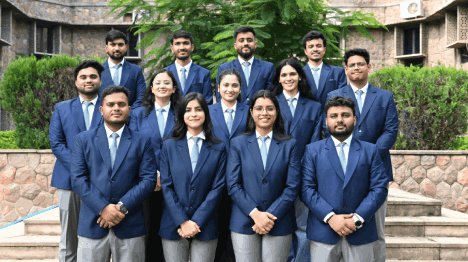- About Us
- Academics
Schools
Programs
General Information
- Faculty
The faculty members and researchers working at IIHMR University come from varied backgrounds including, but not limited to medicine, public health, management, economics, statistics, demography, human geography, social and behavioral sciences, rural development and pharmaceuticals.
- Admissions
- Research
.Publications & Journal
- Executive Education
Executive Programmes
- Online Certification Courses
ONLINE CERTIFICATION Courses
- Training
- Placements
- Fee Payment
- NAAC
- IQAC
- NIRF
- Webinars
- About Us
- About IIHMR University
- Board of Management
- Academic Council
- Board of Studies
- Research Board
- Institutional Review Board
- Finance & Audit Committee
- Departmental Research Committee
- Chairperson's Message
- President's Message
- IIHMR University Act
- Infrastructure
- Collaboration
- Ranking
- Board of Studies (School of Digital Health)
- Awards & Accolades
- Academics
- Institute of Health Management Research
- School of Pharmaceutical Management
- M. L. Mehta School of Development Studies
- School of Digital Health
- SD Gupta School of Public Health
- MBA (Hospital and Health Management)
- MBA (Pharmaceutical Management)
- MBA (Development Management)
- MBA (Healthcare Analytics)
- Master of Public Health
- Student Manual – Cohort 9 (2021-2023)
- Master of Public Health (Offered by Johns Hopkins Bloomberg School of Public Health, USA in cooperation with IIHMR University, Jaipur, India)
- Ph. D.
- MBA CSR & ESG Management (Executive)
- MBA Sustainable Business Management (Executive)
- Common Information for all the Programs
- Academic Calendar
- Student Handbook 2020-21
- Committees
- Policies
- Annual Exam Calendar
- Library
- Faculty
- Officers of University
- Dean of Institute of Health Management Research
- Dean of School of Pharmaceutical Management
- Dean of School of Development Studies
- Dean of SD Gupta School of Public Health
- Dean of School of Digital Health
- School of Digital Health
- Faculty List A to Z
- Faculty List Designation Wise
- Faculty List School Wise
- Admissions
- Research
- Executive Education
- Training
- Placements
- Alumni
- Events
- Job Openings
- Contact
- Research
Rapid Assessment of ANC, Natal & PNC Services in UNICEF focused districts in Rajasthan
Agency : UNICEF, Jaipur
The assessment was commissioned by United Nations Children’s Fund (UNICEF) Rajasthan Office. As a partner agency Institute of Health Management Research, Jaipur (IIHMR) was entrusted to carry out the assessment. In relation to the MDGs on health and nutrition, UNICEF proposed to undertake accelerated efforts in Barmer, Durgapur, Banswara and Jalore districts for ensuring effective results in MCHN interventions. First rapid assessment of MCHN services was conducted during January17th, 2011 to February 20th, 2011 in the rural villages having a population of less than 1000 of four districts. Second rapid assessment of MCHN services was conducted during 28th February to 6th March 2016. The assessment was commissioned by United Nations Children’s Fund (UNICEF) Rajasthan Office. As a partner agency Institute of Health Management Research, Jaipur (IIHMR) was entrusted to carry out the assessment.
The objectives of the study were to develop a database on enabling factors and barriers to MCHN services with a frame of service inputs, service implementation process and its output. This was done through an in-depth analysis of the planning process: availability of appropriate and adequate supplies at different service units: understanding community knowledge, behaviour and utilization patterns towards these services; and studying the level of knowledge and skills of frontline workers and the mechanism established for supportive supervision and monitoring of the MCHN intervention.
For assessment purpose, the 30-cluster sampling technique was used for identifying the rural villages. The data for rapid assessment of MCHN services was collected from mothers or care takers of child 12-23 months for child care services and from women who delivered for 12 months preceding the survey. For selecting the sample in rural areas, a two-stage sampling procedure was followed i.e., selection of villages having a population of less than1000 at the first stage followed by Selection of households. In each selected village, systematic random sampling procedure was used for selection of households to identify households with children 12-23 months, households with mothers who delivered during last 12 months. First house was selected randomly and then continuously houses were taken for interviewing all eligible mothers/care givers. In each village 7 households with child age 12-23 months and 7 mothers who delivered in the last 12 months were taken as a sample of that village. This assessment provided a good data on maternal child health and nutrition status. It was like a comparative assessment because many more MCHN services like immunization status among12-23 months children, ANC check-up, PNC check-up, new-born care, etc. have been improved than previous assessment.



